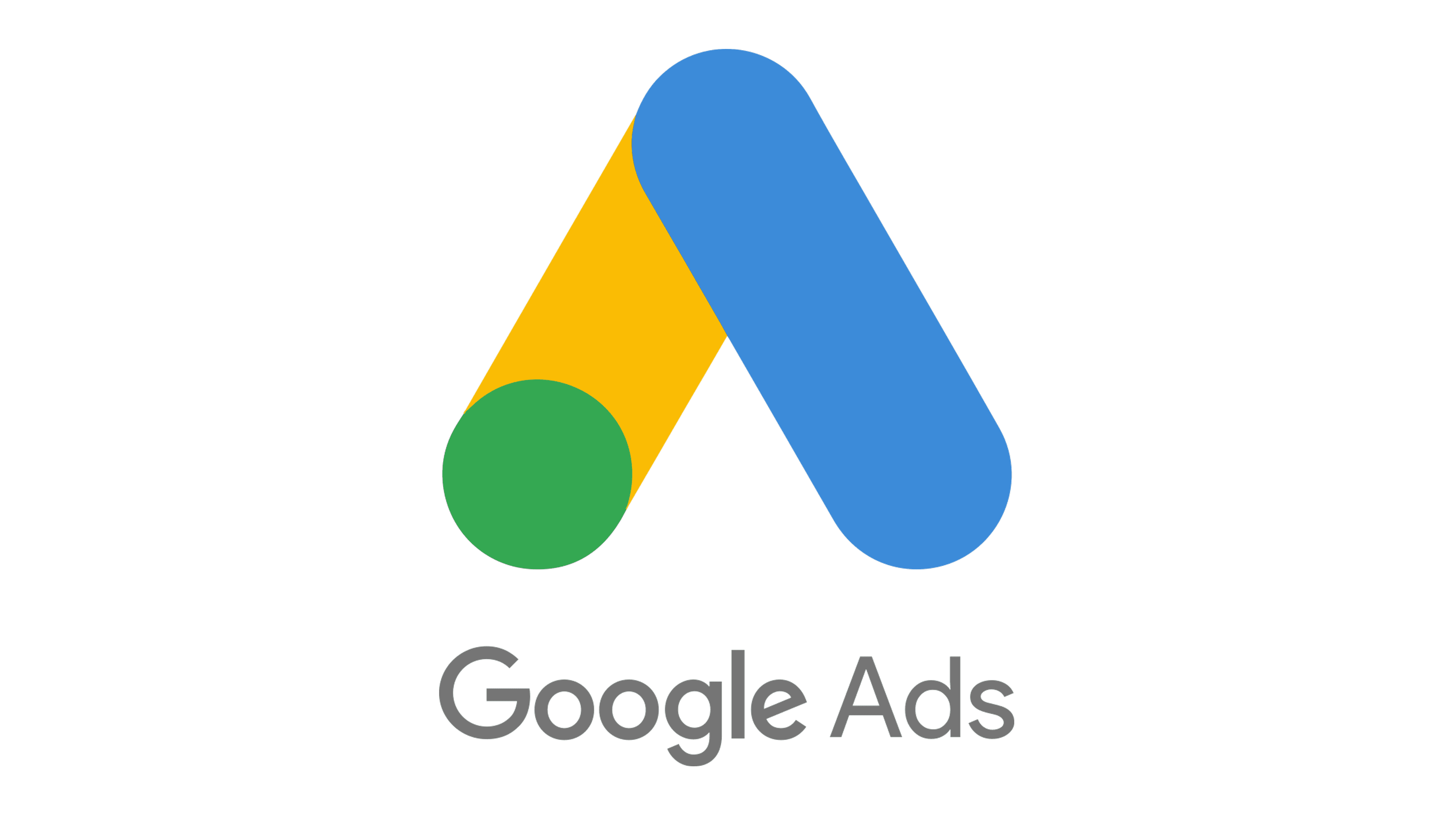Google Ads: A Complete Guide for B2B
Businesses, big or small, can leverage the Google Ads platform to make their products or services visible to an enormous audience of over 259 million unique visitors, experiencing 4.8 billion daily interactions, and posing 5 billion search queries a day.
The question is no longer about whether you should use Google Ads, but rather about how to effectively use it to reach your business goals.
Having a deep understanding of how to set up and optimise these ads is crucial for your marketing and PPC success. This content hub will walk you through the different types of ads and give you the knowledge you need to implement these strategies for yourself. We've highlighted everything you need to know, including:
What Are Google Ads?

When you spot an ad appearing as the first, second, or third search result on Google, it's likely the outcome of a Google Ads campaign. Google Ads allow businesses to pay for their ads to be displayed to customers who search for relevant terms on Google Search and Maps.
As campaigns run, you're provided with measurable results, such as website clicks, opening up a new world of data-driven marketing strategies.
Who is Responsible for Google Ads?
Implementing Google Ads can be managed by anyone within a business, from the marketing team to the CEO.
However, it is often best handled by digital marketing experts or agencies who have a deep understanding of the platform, its features, algorithms, and how to optimise campaigns for the best results. This ensures that your business gets the most out of your Google Ads investment.
Where Do Google Ads Sit in the Marketing Mix?
In the marketing mix, Google Ads play a crucial role in promoting a business's products or services.
They complement other marketing strategies such as SEO, email marketing, content marketing, and social media marketing. Google Ads specifically excel in delivering instant results, unlike SEO which is a long-term strategy.
They can also be extensively customised and targeted, ensuring that your ads reach the right audience at the right time, thereby increasing your chances of conversions and sales.
The Different Types of Google Ads
Google Search Ads Campaigns
Google Search Ads are paid advertisements that appear on Google’s search results page. Businesses bid on specific keywords related to their product or services, and when users search for these keywords, their ads may appear at the top of the search results.
Google Search Ads are a powerful tool for digital marketing, and their optimisation is crucial for maximising ROI. It's essential to perform regular optimisations, considering factors such as budget size, historical data, competitive landscape, and goals.
Learn more about B2B Google Search Ads optimisation and best practice.
Google Remarketing Campaigns
Remarketing campaigns form a compelling digital marketing tactic that enables businesses to reconnect with people who have previously engaged with their website or mobile app. They boost brand awareness and conversion rates by targeting people who have shown interest in the products or services.
Optimisation for Remarketing Ads includes segmenting your audience based on their interaction with your website, setting frequency caps to avoid ad fatigue, using engaging ad copy and design, ensuring landing page relevance, employing conversion tracking, and consistently testing and optimising your strategies.
Learn more about B2B Google Ads Remarketing campaign optimisation and best practice.
Video Ad Campaigns
Video Ads are a crucial component in a brand's advertising strategy. They are short video clips that can be shown on YouTube and across the Google Display Network. They can appear before, during, or after YouTube videos or on other websites where video ad placements are available.
It is important to consider employing various creatives to captivate customers, adding voice-overs to campaigns, evaluating and adjusting cost-per-view (CPV) goals, and refining bids and targeting. Adjusting bids and expanding targeting can assist in achieving lower CPVs and reaching a wider audience.
Learn more about Video Ad optimisation and best practice.
Google Display Ad Campaigns
Display ads, also referred to as banner ads, are a type of online paid advertising that leverages visuals to engage viewers. Display ads can be seen on various platforms including websites, apps, and social media. The forms they take can be quite diverse, ranging from banner ads, interstitial ads, and remarketing ads, to lightbox ads, 360-degree video ads, and responsive display ads.
Learn more about B2B Google Display Ad Campaigns and best practices.
Google App Ad Campaigns
A Google App Ad is an advertising program by Google that helps businesses promote their apps across various Google platforms, including Google Search, Google Play, YouTube, and the Google Display Network.
These ads streamline the app promotion process: instead of designing individual ads, you provide text, assets, and a bid, and Google optimises the ads for you. There are three types of app campaigns: app installs, app engagement, and app pre-registration.
Learn more about B2B Google App Ads campaign optimisation and best practice.
Google Shopping Ad Campaigns
Google Shopping Ads are a valuable tool for online marketers, particularly those in the e-commerce sector. Shopping ad optimisation starts with the product feed, ensuring all relevant information like images, product titles, and prices are accurately represented. High-quality images, accurate pricing, and keyword-rich titles and descriptions are crucial.
Learn more about B2B Google Shopping Ads campaign optimisation and best practice.
What are the benefits of using Google Ads?

Google Ads offers a strategic approach that allows businesses to reach their prospective customers, drive traffic, and ultimately increase sales. Here are some key reasons why Google Ads are a strategic necessity for businesses today:
Targeted Advertising
The ability to target your ads is one of the significant advantages of Google Ads. It allows you to display your ads to specific audiences based on their interests, demographics, and online behaviour. This means your ads are seen by individuals who are more likely to be interested in your products or services, leading to higher conversion rates.
Cost Control
Google Ads provides businesses with complete control over their advertising budget. There is no minimum spend, and you have the flexibility to choose how much you wish to spend per month, per day, and per ad. Importantly, you only pay when a user clicks on your ad, ensuring that your budget is used effectively.
Measurable Success
With Google Ads, every click, impression, and conversion is tracked, providing you with clear insights into your return on investment (ROI). By understanding which ads are performing well and which ones aren't, you can refine your campaigns to maximise your ROI.
Reach Customers Across Devices
In today's digital age, people use multiple devices to access the internet. Google Ads allow you to reach potential customers regardless of the device they are using - be it desktops, laptops, tablets, or smartphones.
Learn more about the benefits of Google Ads.
How do Google Ads Work?

Google Ads function primarily on the concept of keywords. Advertisers select keywords relevant to their business, and when these keywords are searched for by users, Google displays the related ads. The position of these ads on the search results page is determined by an auction system.
The Ad Auction
The Google Ad Auction is an integral part of how Google Ads work. It's an entirely automated process used by Google to determine which ads will be displayed for a specific keyword search, their placement, and the cost per click (CPC).
Advertisers participate in a bidding process where they choose keywords related to their business and define a maximum bid amount they're willing to pay each time a user clicks on their ad—this is known as cost-per-click (CPC).
However, winning the Ad Auction doesn't merely depend on who bids the highest. Google also considers the quality and relevance of the ad, measured by the Quality Score.
The Quality Score
The Quality Score is a crucial element in understanding how Google Ads work. This metric rates the quality and relevance of your keywords and PPC adverts. It has a significant influence on your CPC and the overall performance of your ads.
Google calculates the Quality Score based on the relevance of your ad copy to the keyword, the expected click-through rate (CTR), and the user experience on your landing page. A higher Quality Score can lead to lower costs and better ad positions.
The Ad Rank
Ad Rank is a key metric used in the Ad Auction process. Google calculates it by multiplying the bid amount by the Quality Score. An ad with a higher Ad Rank secures a better placement on the SERP. Thus, the position of ads on the search results page is not just a product of higher bidding but also hinges on the quality and relevance of the ads.
Learn more about how Google Ads work.
Optimising Google Ads for B2B Success
/Multiethnic%20group%20of%20young%20people%20sitting%20in%20conference%20room%20and%20brainstorming%20on%20business%20meeting.jpeg?width=1000&height=667&name=Multiethnic%20group%20of%20young%20people%20sitting%20in%20conference%20room%20and%20brainstorming%20on%20business%20meeting.jpeg)
To ensure your Google Ads campaigns deliver the desired results, it's crucial to optimise them effectively. Here are some strategies for success:
Keyword Optimisation
Choosing the right keywords is vital for the performance of your ads. Select high-quality, relevant keywords that your potential customers are likely to use when searching for your products or services. Keep refining your keyword list to improve the effectiveness of your campaigns.
Ad Copy Optimisation
Your ad copy should be engaging and persuasive, clearly communicating the value of your offering. It should include a compelling call-to-action that encourages users to click on your ad.
Landing Page Optimisation
The page your ads lead to, known as the landing page, plays a significant role in converting clicks into customers. Ensure your landing page is relevant to your ad copy and provides a seamless user experience.
Budget Optimisation
Regularly review and adjust your budget based on the performance of your ads. Invest more in high-performing ads and reduce spending on underperforming ones to maximise your ROI.
Learn more about how to optimise your Google Ad copy.
Google Ads: Frequently Asked Questions
Here are some of the commonly asked questions in relation to Google Ads:
How can I see competitors' Google ads?
Google has been making it gradually harder to spy on competitors’ Google Ads by limiting key metrics, we advocate the macro approach. Here’s a roundup of what’s currently possible when it comes to reviewing competitors’ Google Ads strategies:
What you can’t do:
- See exactly what your competitors are spending
- See exactly which terms your competitors are bidding on
What you can do:
- Extrapolate insights from available data about what competitors are up to
- Get a feel for how this data maps to campaign results
- Glean insights about the industry as a whole
- Work with a PPC agency to get more insights
Learn more about your competitor's ads.
Can I Run Google Ads Without a Website?
The short answer is no, you can't run Google Ads without having a website or at least a landing page. You need to have at least a landing page because you'll need somewhere to send traffic from your ads - i.e. directing people from your ads to a specific page where they can fill out a contact form to get in touch with you.
Learn more about how to optimise a website to run Google Ads.
How Long Does it Take for Google Ads to Deliver Results?
If you have never run a Google Ads campaign before and you don't have historical data on the account, it can take at least a month and a half to see some conversions and leads from Google.
Learn more about how long it takes Google Ads to deliver results.
What is the Average Cost per Click for Google Ads?
The answer is: "It depends”. It depends on the business type and on the cost per click for that specific industry and keyword.
Discover more about key PPC metrics.
Elevating Your Business with Google Ads
In conclusion, Google Ads serve as a powerful tool for businesses to navigate the digital marketing landscape effectively.
They offer a strategic, cost-effective, and measurable way to reach potential customers, irrespective of the device they use. By leveraging the power of Google Ads, businesses can enhance their online visibility, drive more traffic, and boost sales, all while maintaining control over their budget.
Whether you're a small business or a large corporation, Google Ads can be a game-changer for your digital marketing strategy, propelling you towards success in the digital world.


